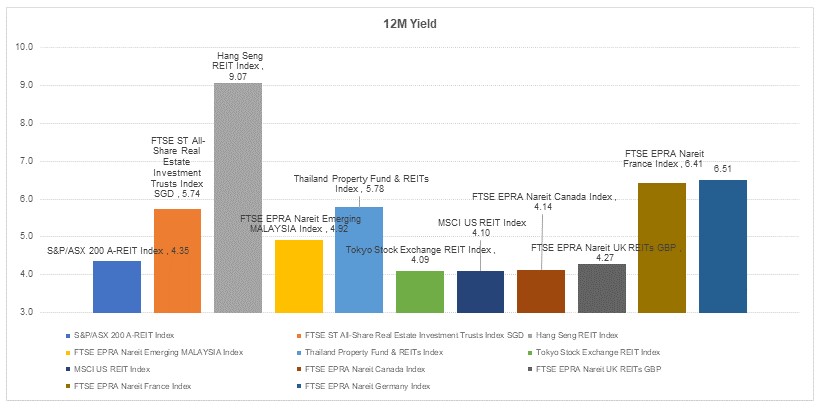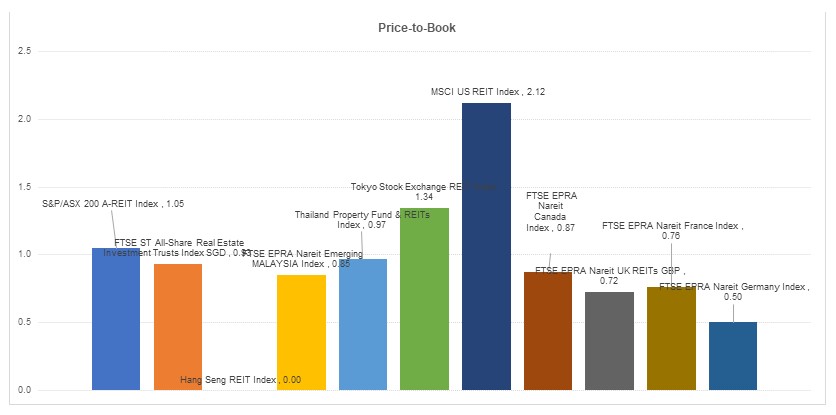
Weekly Commentary: 20 February 2023 – 26 February 2023



The major benchmarks returns were mixed as there were healthy growth and profit signals against worries that inflation trends might be taking an unfavourable turn. The overall CPI climbed 0.5% in January, the most in three months, and was bolstered by energy and shelter costs. When compared y-o-y, the measure was up 6.4% from a year earlier, according to data from the Bureau of Labour Statistics. Another metric, Core CPI, which excludes food and energy, advanced 0.4% last month and was up 5.6% from a year earlier. The figures, when paired with January’s blowout jobs report and signs of enduring consumer resilience, underscore the economy’s durability. The path to stable prices will likely be both long and bumpy. The producer price index rose 0.7% in January, its biggest gain since June, while core producer prices rose 0.5%, the most since May. Nevertheless, producer prices continued their steady and steep decline since June y-o-y, falling almost in half, from 11.2% to 6.0%. Initial jobless claims, a proxy for layoffs, decreased by 1000 to a seasonally adjusted 194,000 last week and weekly claims have remained below the 2019 pre-pandemic average of about 220,000 since the start of the year, a sign of continued tightness in the labour market. Investors have been piling into high-quality corporate bonds this year at a record rate, reflecting enthusiasm for an asset class that is typically seen as relatively low risk but now offers the best returns in years. A total of $19billion has poured into funds which buy investment grade corporate debt around the world since the start of 2023.
Stock returns were mixed over the week as observed across the following 3 indices, with the Dow Jones Industrial Average (+0.02%), S&P 500 Index (-0.20%), and NASDAQ Composite Index (+0.63%). Most of the major key market indices were in negative territory last week. 3 notable S&P 500 sectors registered losses this week – Energy (-6.46%), Real Estate (-1.34%), and Materials (-0.90%) Main outperformers for the week were from subsector such as Consumer Discretionary (+1.66%) only. For 2022 as a whole, index returns were negative for the Dow Jones Industrial Average (-8.78%), S&P 500 (-19.44%) and the NASDAQ Composite (-33.10%).
The yield-curve remains inverted as the 10Y-2Y US Treasury spread widened 2bps to -0.80%, driven by U.S 2-year and 10-year Treasury yields rising 10 bps to 4.62% and 8 bps to 3.81% respectively. Market sentiment also became more risk-on as the U.S. High Yield (HY) – Investment Grade (IG) credit spread widened 9bps to 3.05% while the CBOE Volatility Index (VIX) has dropped 51bps to 20.02%.
The week ahead will be dominated by talk of U.S. Household spending and home sales in focus. Consumer spending fell 0.2% in December from the prior month, the second consecutive monthly drop. More recently, U.S. retail sales, which capture part of consumer spending, jumped 3% in January. The U.S. will also release its personal-consumption expenditures price index, a gauge of inflation closely watched by the Fed. The Commerce Department will also release data on new home sales in January, which account for about 10% of the housing market.

The global REIT markets returns were mixed over the past trading week. Closer to home, the iEdge S-REIT Index (-1.26%) and all of its subsectors generated negative weekly returns except Diversified REITs (+0.96%). Industrial (-1.17%), Retail ( -2.31%), and Healthcare (-0.98%) was the subsector that fell more than the other sector compared to the index. REITs generally have been affected by decreasing yield spread as interest rates surged and investors price in the possibility of reduced distributions stemming from higher financing costs. However, we do expect inflows to return to the sector given the existing attractive valuations on offer and resilience offered by the REIT asset class in light of the waning global growth outlook.



Important Information
This material is provided by Phillip Capital Management (S) Ltd (“PCM”) for general information only and does not constitute a recommendation, an offer to sell, or a solicitation of any offer to invest in any of the exchange-traded fund (“ETF”) or the unit trust (“Products”) mentioned herein. It does not have any regard to your specific investment objectives, financial situation and any of your particular needs. You should read the Prospectus and the accompanying Product Highlights Sheet (“PHS”) for key features, key risks and other important information of the Products and obtain advice from a financial adviser (“FA“) before making a commitment to invest in the Products. In the event that you choose not to obtain advice from a FA, you should assess whether the Products are suitable for you before proceeding to invest. A copy of the Prospectus and PHS are available from PCM, any of its Participating Dealers (“PDs“) for the ETF, or any of its authorised distributors for the unit trust managed by PCM.
An ETF is not like a typical unit trust as the units of the ETF (the “Units“) are to be listed and traded like any share on the Singapore Exchange Securities Trading Limited (“SGX-ST”). Listing on the SGX-ST does not guarantee a liquid market for the Units which may be traded at prices above or below its NAV or may be suspended or delisted. Investors may buy or sell the Units on SGX-ST when it is listed. Investors cannot create or redeem Units directly with PCM and have no rights to request PCM to redeem or purchase their Units. Creation and redemption of Units are through PDs if investors are clients of the PDs, who have no obligation to agree to create or redeem Units on behalf of any investor and may impose terms and conditions in connection with such creation or redemption orders. Please refer to the Prospectus of the ETF for more details.
Investments are subject to investment risks including the possible loss of the principal amount invested, and are not obligations of, deposits in, guaranteed or insured by PCM or any of its subsidiaries, associates, affiliates or PDs. The value of the units and the income accruing to the units may fall or rise. Past performance is not necessarily indicative of the future or likely performance of the Products. There can be no assurance that investment objectives will be achieved. Any use of financial derivative instruments will be for hedging and/or for efficient portfolio management. PCM reserves the discretion to determine if currency exposure should be hedged actively, passively or not at all, in the best interest of the Products. The regular dividend distributions, out of either income and/or capital, are not guaranteed and subject to PCM’s discretion. Past payout yields and payments do not represent future payout yields and payments. Such dividend distributions will reduce the available capital for reinvestment and may result in an immediate decrease in the net asset value (“NAV”) of the Products. Please refer to <www.phillipfunds.com> for more information in relation to the dividend distributions.
The information provided herein may be obtained or compiled from public and/or third party sources that PCM has no reason to believe are unreliable. Any opinion or view herein is an expression of belief of the individual author or the indicated source (as applicable) only. PCM makes no representation or warranty that such information is accurate, complete, verified or should be relied upon as such. The information does not constitute, and should not be used as a substitute for tax, legal or investment advice.
The information herein are not for any person in any jurisdiction or country where such distribution or availability for use would contravene any applicable law or regulation or would subject PCM to any registration or licensing requirement in such jurisdiction or country. The Products is not offered to U.S. Persons. PhillipCapital Group of Companies, including PCM, their affiliates and/or their officers, directors and/or employees may own or have positions in the Products. This advertisement has not been reviewed by the Monetary Authority of Singapore.